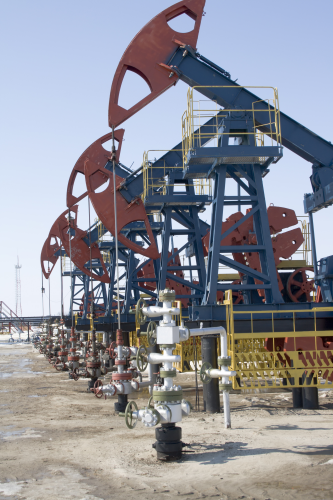
As oil prices continue on their ever-upward spiral, oil companies are increasingly looking to optimise their production. Contrary to the depiction of oil discovery in films, drilling does not always start with a fountain of ‘black gold’ and the crude oil usually has to be pumped to the surface. Herein lies a problem. The oil very often lies in a sand slurry, sometimes up to 10,000 metres below the surface and must be pumped up for recovery.
Sand contamination can not only wreck the pumps but erode the pipeline so filters have to be installed to exclude the sand from the oil. The balance in the pore size of the sand screens is critical. The larger the pore sizes, the higher the flow rates and the more efficient the well but contamination is the real threat. If the pore sizes are too small, the oil may be clean but flow rates are very low and in the extreme, the filter can be completely blocked.
An expensive failure
In both cases, catastrophic failure of the well will incur a cost penalty of over $20 million dollars. The cost of hiring the offshore rigs is more than $250,000 per day, let alone the cost of 10,000 metres of the highest quality stainless steel pipe. In one notorious example, seven oil wells were sequentially ‘junked’ because the sand screens were inaccurately specified resulting in a bill for US$140 million.
Oil companies are therefore understandably very keen to know the precise aperture size of the sand screens and tailor them specifically for the particle size distribution of the sand in the region, which can vary from 100 microns to 400 microns.
The difficulty in measuring the apertures in a sand screen is that, unlike a simple test sieve, which can be measured by microscopy, these complex woven meshes are three dimensional, usually woven as a twill, so the apertures cannot be seen by microscopy.
Filter testing
In meshes that are made up of overlapping wires or are totally opaque to light, microscopy cannot be used and the only way of determining pore size is to use glass microspheres. In the original method, the glass microspheres were passed through the mesh, either by dry shaking or as a liquid suspension, and the largest particle passing was used to determine the maximum pore size.
The problem with this method is that it is statistically unreliable. Firstly, it is not always possible to obtain a representative sample of the mesh so the results were dependent on sample selection, and secondly, the broad size distribution glass beads used made it difficult, and extremely time consuming, to actually find the largest beads passing because of their low concentration.
Sonic speed
In the latest evolution of the method, significant improvements in repeatability have been made by using high precision, narrow distribution glass microspheres in conjunction with a sonic sifting device.
The narrow distribution has the effect of increasing the particle concentration near the cut point of the mesh, while a computer controlled sonic device gives highly repeatable results in just a few minutes.
Although microscope analysis of the beads passing the mesh can still be used to determine the maximum pore size, a much faster gravimetric method has been developed. In this method, highly accurate electroformed sieves have been used to determine the weight distribution of all the beads in the standard. Thus the weight of beads passing an unknown mesh can be related directly to a particular bead size and so to the cut point of the mesh.
The results from the 90mm diameter specimens of the mesh are repeatable to within a few microns and are directly traceable to the international standards of length such as NIST.
Mud screens
Mud screens are used above ground to remove the drilling by-products from the lubricating mud injected during drilling. Careful selection of the mesh aperture size is again of great importance both to preserve the quality and the recovery of the mud.
Although Corundum particles are traditionally used to calibrate the screens, the sieve fractions are extremely tedious to prepare and the irregular shape of the particles can give ambiguous results. Furthermore, the test itself can take up to an hour to perform.
A 200mm version of the sonic siever has been developed to take the special screen holders and it is now possible to calibrate the mud screens in less than 5 minutes using the same range of filter standards used for the sand screens.
A question of uncertainty
It's surprising how many scientist and engineers quote a mesh cut point without reference to the uncertainty of measurement. Taking as an example the non-woven meshes, the aperture size is entirely dependent on where the sample of mesh is taken from.
In an area where the wire filaments are sparsely populated, the aperture size can be as much as 400% greater than the more densely populated sections. Such an error could easily end up as a $20 million billion.
Wire woven meshes however, can be fabricated with much higher tolerances and it is not uncommon to find variations of less than 2% in a production run of several hundred metres.
Real confidence
In the field of oil production, the combination of narrow particle size distribution glass microspheres with a new Sonic Filter Tester has been one of the most significant developments in recent years. The method is unparalleled in terms of accuracy and repeatability, which gives the engineer great confidence in the selection of sand screens.
It is now possible to engineer sand screens specifically for the different geological regions around the world where the optimum balance between oil production and sand exclusion can be easily attained. Whether this has an effect on the current price of oil is another matter…





